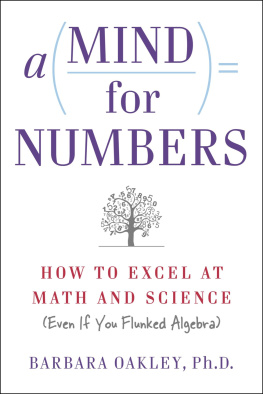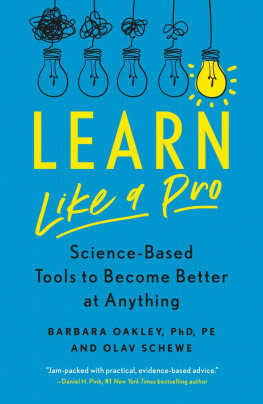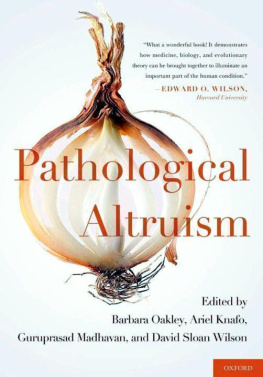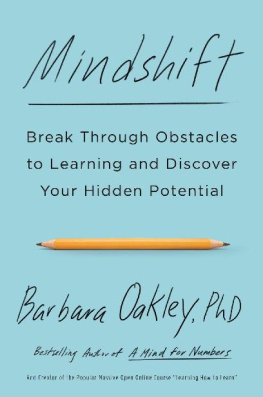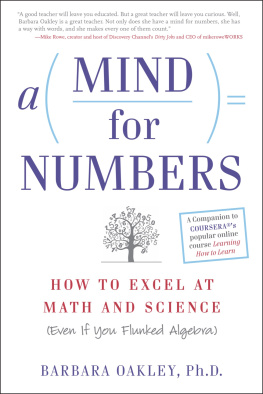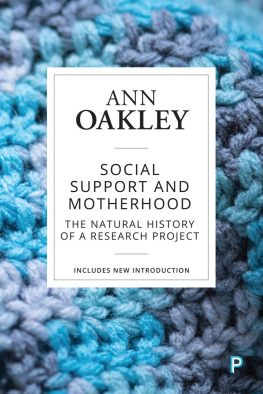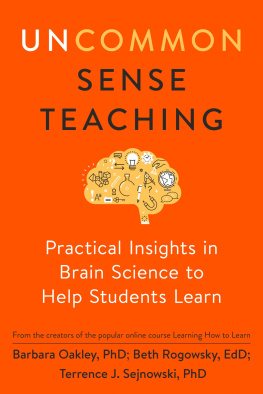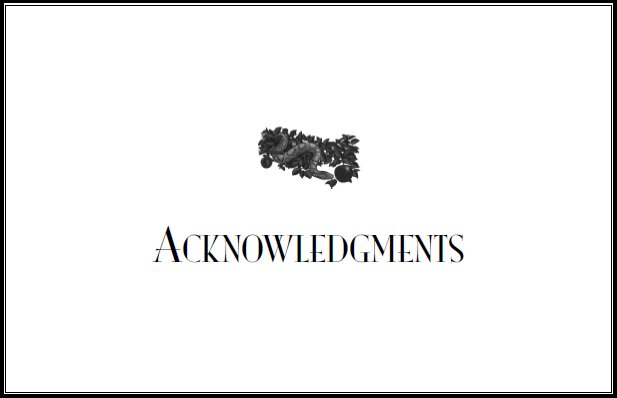
A number of important people have been responsible for getting this literary car on the road and keeping it on track. The first is my agent, Ben Salmon of Rights Unlimited, who plucked the early, rough manuscript from obscurity and took it to the top. The second is my Prometheus editor, Linda Greenspan Regan, who is the topher support, guidance, and superb pointed criticisms have been of enormous benefit to this work. I am also deeply indebted to my editor, Audrey Perkins, faculty at Linn-Benton Community College in Albany, Oregon. Audrey has waded through every word of the developing manuscript numerous times (and since the manuscript was originally half again as long, that's saying a lot). Her careful and incisive editorial suggestions have been invaluable in improving the manuscript's quality and lifting it to a higher level. Audrey's colleague, Richard Liebaert, formerly of the Linn-Benton Biology Department, has also waded twice through the manuscript and made terrific contributions with his constructive criticism, which extended from a wide range of scientific insights to stuff in general. Professor Robin Hemley, director of the Nonfiction Writing Program at the University of Iowa, helped provide guidance during a crucial period in the book's formation, as did Dr. Richard Bruno, a leading authority on post-polio syndrome. My dear friend Dr. Gabrielle Stryker has given profoundly appreciated guidance and assistance related to both immunology and the book's illustrations.
A number of experts have reviewed various portions of the manuscript as well as the manuscript as a whole. However, any book that covers so many different disciplines is bound to be deemed problematic at times. No one can possibly have read all the relevant literaturevirtually every book I cite, for example, has tantalized me with ten or more alluring references. The more discerning specialists will undoubtedly be able to think of exceptions, objections, counterexamples, and contradictions to the possibilities, generalizations, and conclusions that have been presented here. I apologize in advance to those who might take offense in this regard and note that any errors that might be found are mine and mine alone. Additionally, I would like to point out that those who have helped me on certain aspects of this work should not be taken to share all of my views. My intention with this book was to provoke thought, since we have just reached the edge of knowledge where science has become extraordinarily thought provoking.
I could not have written this book without the wisdom of crowds. I am deeply indebted to the following individuals for their many contributions: Elizabeth Abbott, Craig Becker, Mary Tracy Bee (thanks for making cutting up corpses fun!), Giuseppe Biamonti, Warren Buffett, Rand Careaga, Rita Carter, Cindy Collins, Richard Felder, Paul Frick, Marc Haeringer, Jon Halliday, Sabine Herpertz, Linda Jack, Quinn Tyler Jackson, Kent Kiehl, Grace Kwok, Shailesh Lal, Eric LaRock, Doreen Lawrence, Cameron Leith, Guruprasad Madhavan, Peter McConville, Sam McFarland, Ken McLeod, Mark Milstein, Stephen J. Morse, Dmitri Nabokov, Andrew Nathan, Randolph Nesse, Joseph Newman, Nete Munk Nielsen, Jerry Oppenheimer, Jim Phelps, Cliff Pickover, Robert Plomin, Lucian Pye, Xianggui (Harvey) Qu, Adrian Raine, James M. Royer, Pat Santy, Kwai Sim Shek, Ken Silk, Daniel J. Simons, Helen Smith, Margaret Soltan, Richard Stamps, Bella Stander, David and Laura Stiles, Glenn Storey, Eugene Subbotsky, Ron Summers, Essi Viding, Daniel Weinberger, Margaret Willard-Traub, David Sloan Wilson, Matthew A. Wilson, and Ke Xu.
Judith Rich Harris, author of The Nurture Assumption, gave me gentle impetus at the beginning of this projectfor her graciousness I am utterly grateful. I could not have written this book if she had not broken trail.
At Prometheus Books, Julia DeGraf's copy-editing skills are remarkable, and deeply appreciated. Grace Zilsberger's cover design is inspired (those who look closely might spot the DNA double-helix on the snake's back). Chris Kramer, Jill Maxick, Rich Snyder, Gretchen Kurtz, Mark Hall, Marcia Rogers, Bruce Carle, and Lynn Pasquale round out the crew of consummate Prometheus professionals who I've been fortunate indeed to work with. No questionPrometheus president Jonathan Kurtz runs a taut ship.
At Oakland University, my dean, Pieter Frick, and department chair, Chris Wagner, have provided congenial support and encouragement, as have my part-time department chairs, Manohar Das and Gary Barber. I am very grateful. I also take this opportunity to thank the indefatigable staff at the Oakland University Interlibrary Loan Department, especially Patricia Clark, Diane Boving, and Dante Manes Rance, who I'm sure have long since concluded that I have unhealthy interests for an engineering professor.
Some of my friends at Oakland University have contributed in ways too numerous to count to this project: Kris Allen, Farid Badar, Gary Barber, Len Brown, Dan Chang, Todd Estes, Christine Hansen, Richard Haskell, Peggy Lin, Kathy Pfeiffer, Pat Piskulich, Andrew Rusek, Brian Sangeorzan, Donna, John and Carina Searight, Meir Fiki Shillor, Anna Spagnuolo, and most especially, Cathy Starnes. Thank you all for making every day a fun day to come to work.
Our younger daughter's line drawings are deeply appreciated. (Artistic talent not only skipped my generationit left a vacuum.) Our older daughter's eagle eyes and insightful comments were invaluable. Our adopted sons Bafti and Irfan have each contributed in many ways and made my life and this book richer and more complete. I also thank my in-laws, Jane Raley and Daniel Oakley, whose patient encouragement and interest over the many years of this project has been greatly appreciated. My brother, as always, has provided faith in the fundamental decency of this branch of the family.
My husband, Philip, swept me off my feet with a three-week engagement at the South Pole in Antarctica nearly twenty-five years ago. I knew it was a risk, but I thoughtthis man is worth the risk. How right I was! Surprisingly for me, a writer, I can't find the words to describe my luck. But I can tell you this: I could have done none of this without Philip.

Professor Barbara Oakley's Evil Genes provides a terrific big picture overview of those who carry traits similar to borderline personality disorder. What Barb didn't tell you, however, was that when she first began to look for information related to her sister, she stumbled across my Stop Walking on Eggshells. That's what started the boulder rolling, she told me.
Many who have read Evil Genes have asked Dr. Oakley what they should do if they are dealing with a troubled person in their life who they suspect has someor manyof the symptoms of borderline personality disorder. As it turns out, my most recent book, The Essential Family Guide to BPD: New Tools and Techniques to Stop Walking on Eggshells, deals with precisely that topic. That's why Barb asked me to write this afterword.
As you know, many of those who have symptoms of borderline personality disorder remain undiagnosed. Some of these people can function at prominent levelsas doctors, ministers, business leaders, or other highly respected individuals. If you suspect someone you care about or work with has some or many of the traits of borderline personality disorder, you may be left feeling helpless and hopeless. However, you do have the power to improve your situation whether or not the borderline-like person (BP) you know chooses to change.
Next page

